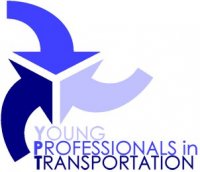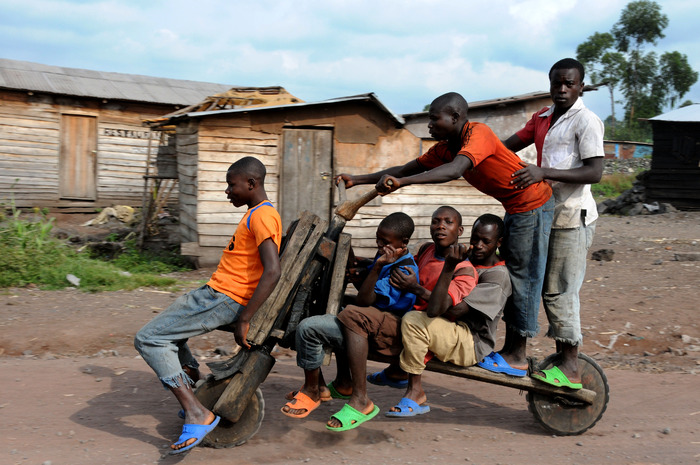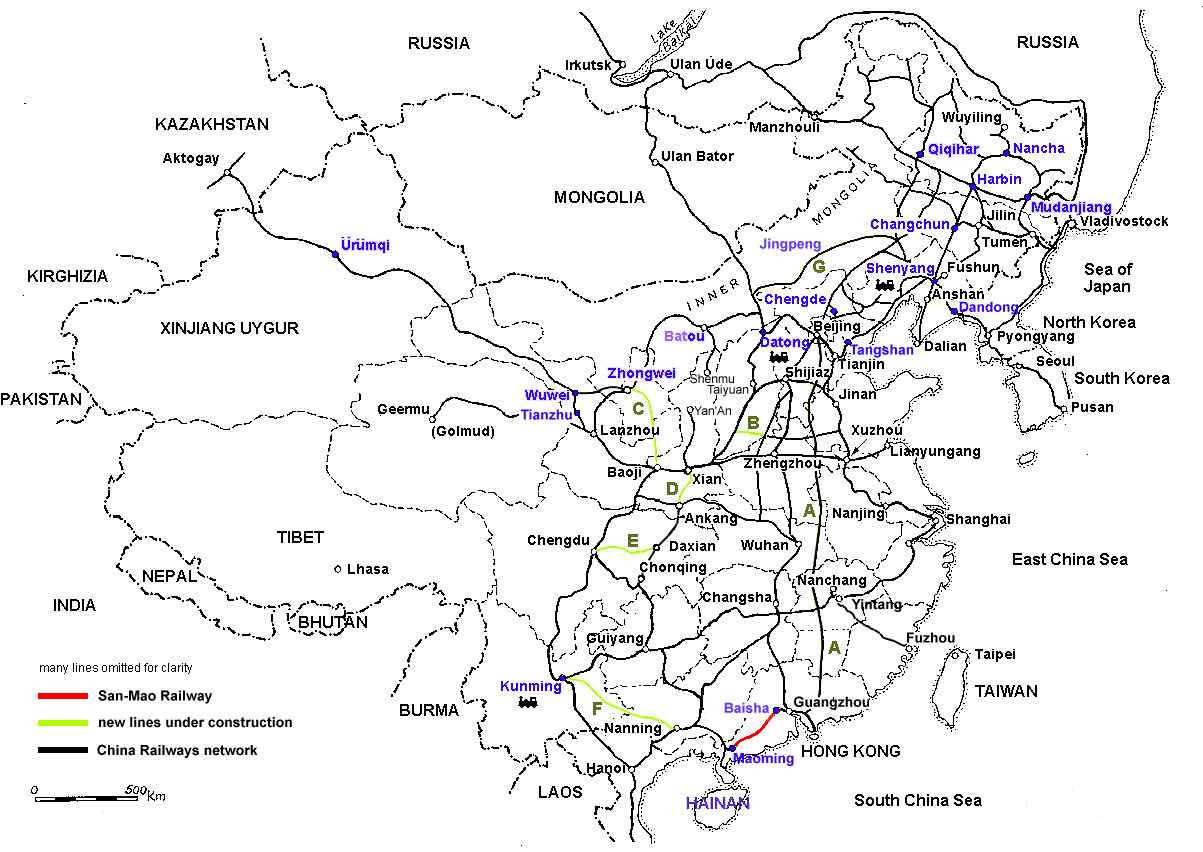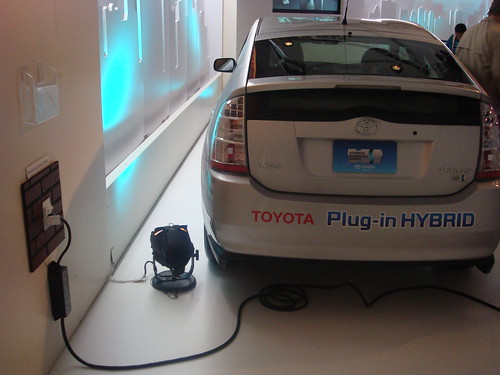(Source: Office of Planning, Environment and Realty – Federal Highway Administration)
Recent Events
U.S. DOE and U.S. EPA announce the 2010 Fuel Economy Guide for model year 2010 vehicles. Each vehicle listing gives an estimated annual fuel cost, based on the vehicle’s MPG rating and national estimates for annual mileage and fuel prices. The online version of the guide allows consumers to input their local gasoline prices and typical driving habits to receive a personalized fuel cost estimate. Fuel efficiency is important for reducing CO2 and other GHGs. The top ten fuel economy leaders for 2010 include nine hybrid vehicles, from compact cars to SUVs.
World Resources Institute issues provisional GHG emissions reporting standard for public sector. The standard was developed in consultation with agencies from all levels of government and is supported by the Federal Energy Management Program within U.S. DOE and U.S. EPA. The standard includes guidance on how to apply GHG accounting principles to government operations at the federal, state and local level. The standard is compatible with the Local Government Operations Protocol recently adopted by The Climate Registry, ICLEI Local Governments for Sustainability (ICLEI), the California Air Resources Board (CARB) and California Climate Action Registry (CCAR). For questions or to submit comments on the standard, please email Stephen Russell or Mary Sotos at pspcomments@wri.org.
EESI publishes State Actions on Climate Change: A Focus on How Our Communities Grow, to encourage State, regional, and local governments to focus on land use reform as a key strategy for reducing GHG emissions. The publication is the result of collaboration with the American Planning Association to develop tools to assist planners. The study examined State and regional climate action plans for their inclusion of transportation, green building, and land use or “smart growth” practices and found that the plans cover a broad range of strategies, because each area has unique geographic and socioeconomic conditions. Of the three, transportation practices were the dominant feature, along with, to a lesser degree, green building policies. Some common transportation policies include adopting California’s vehicle emissions standard (the country’s most aggressive standard), creating more mass transit options, and providing incentives to lower VMT. Specific smart growth practices appeared to be the least likely component of the plans. A table at the end of the document shows some aspects of urban planning that are incorporated. Any GHG reduction targets adopted or regional climate action plans to which a state belongs are provided.
Simple Measures Can Yield Big GHG Cuts, Scientists Say in Proceedings of the National Academy of Sciences. Dr. Thomas Dietz, Michigan State University assistant vice president for environmental research, and his colleagues find that simple, voluntary activities such as routine vehicle maintenance, carpooling and trip chaining, eco-driving, and use of low-rolling-resistance tires can result in significant reductions in GHG emissions and, therefore, “deserve increased policy attention.” They examined 17 household action types in five behavioral categories. Adoption of these actions typically is the result of several policy tools and strong social marketing, the authors state. They estimate that if the behaviors became the norm across the nation it could save 123 million metric tons of carbon per year, equal to 7.4% of U.S. national emissions, within ten years with little or no reduction in household well-being. Their estimates are based on “how many families could reasonably be expected to take such measures if they were provided information, offered financial assistance and could interact with others doing so.”
Managing Our Coastal Zone in a Changing Climate: The Time to Act is Now Issued by the Parliament of the Commonwealth of Australia Provides Insights Relevant to U.S. The fact that many Australian coastal communities have single-access roads is an issue of grave concern to the Commonwealth. The report noted that evacuation routes were a significant factor in the extent of a July 2009 bushfire tragedy (“Black Saturday”). Dr. John Church, from [the Commonwealth Scientific and Industrial Research Organisation, Australia’s national science agency] pointed out that “sea-level-rise planning benchmarks need to be part of a risk management framework,” stating “We really have to move into a risk assessment framework…where we talk more about probabilities and the risks that we are prepared to take….One problem that we have is that planners tend to come to us and say, “How much do we need to allow for sea level rise?’ The retort I always give is, ‘What kind of risks do you want to take?’ I think this is a very important change in process that we need: to put the onus of the risk back onto the planners and the policymakers, not leave it to the scientists.’
State and Local News
Draft Pennsylvania Climate Action Plan released for comment. The plan contains 52 climate policy actions, which are estimated to reduce the Commonwealth’s GHG emissions by 95.6 million metric tons (a 36 percent reduction below year 2000 business-as-usual levels, 42% if recent state and federal actions are included) and to provide a net gain of $5.13 billion and 54,000 new jobs by 2020. The Plan does not address climate change adaptation. The GHG emissions inventory and projections, which cover 1990 to 2020, use “standardized methodology prescribed by the [EPA] and in accordance with international standards.” Transportation is the third largest source of GHG emissions in Pennsylvania (24% in 2000, of which gasoline-powered on-road vehicles accounted for about 64% and on-road diesel vehicles for 15%). Of all the sectors analyzed, GHG mitigation actions from transit and ground passenger transportation are projected to produce the second largest financial gain for the Commonwealth. The Land Use and Transportation work plan recommendations are listed in the following table.
Land Use and Transportation (LUT) Work Plan Recommendations
| Work Plan No. |
Work Plan Name |
Annual Results (2020) |
Cumulative Results (2009-2020) |
CCAC Voting Results (yes/No / Abstained)1 |
| GHG Reductions (MMtCO2e |
Costs (Million $) |
Cost Effectiveness ($/tCO2e) |
GHG Reductions (MMtCO2e |
Costs (NPV, Million $) |
Cost Effectiveness ($/tCO2e) |
| 3 |
Low-Rolling-Resistance Tires |
.68 |
-$212 |
-$310 |
4.1 |
-$1,244 |
-$300 |
16/5/0 |
| 5 |
Eco-Driving |
PAYD |
.43 |
-$277 |
-$651 |
1.76 |
-$1,065 |
-$605 |
13/8/0 |
| Feebates |
.41 |
-$133 |
-$320 |
2.74 |
-$810 |
-$296 |
13/8/0 |
| Driver Training |
.62 |
-$129 |
-$206 |
4.53 |
-$605 |
-$134 |
13/8/0 |
| Tire Inflation |
.09 |
-$27 |
-$282 |
0.58 |
-$137 |
-$238 |
13/8/0 |
| Speed Reduction |
1.96 |
$185 |
$94 |
23.0 |
$4,153 |
$181 |
13/8/0 |
| 6 |
Utilizing Existing Public Transportation Systems |
.05 |
$300 |
$6.000 |
0.55 |
$3,000 |
$5,454 |
13/8/0 |
| 7 |
Increasing Participation in Efficient Passneger Transit |
.12 |
<$0 |
<$0 |
2.02 |
<$0 |
<$0 |
21/0/0 |
| 8 |
Cutting Emissions From Freight Transportation |
.99 |
-$293 |
-$295 |
6.67 |
-$1,495 |
-$224 |
15/6/0 |
| 9 |
Increasing Federal Support for Efficient Transit and Freight Trasport in PA |
1.17 |
$92 |
$78 |
12.87 |
$1.0082 |
$78 |
20/1/0 |
| 10 |
Enhanced Support for Existing Smart Growth/Trasportation and Land-Use Policies |
.76-1.84 |
<$0 |
<$0 |
3.79-9.18 |
<$0 |
<$0 |
13/8/0 |
| 11 |
Trasit-Oriented Design, Smart Growth Communities, & Land-Use Solutions |
Included in T-10 |
<$0 |
<$0 |
Included in T-10 |
<$0 |
<$0 |
13/8/0 |
| Sector Total After Adjusting for Overlaps |
6.6 |
-$494 |
-$75 |
60.1 |
$2,805 |
$47 |
|
| Reductions From Recent State and Federal Actions |
15.7 |
-$1093 |
-$313 |
72.0 |
-$3803 |
-$253 |
|
| 1 |
Pennsylvania Clean Vehicles (PCV) Progarm |
0.095 |
0.0 |
0.0 |
1.27 |
0.0 |
0.0 |
NA |
|
Federal Vehicle GHG Emissions and CAFE Standards |
12.2 |
NQ |
NQ |
57.3 |
NQ |
NQ |
NA |
| 2 |
Bofuel Developemnt and In-State Production Incentive Act |
3.47 |
-$89 |
-$26 |
14.8 |
-$203 |
-$14 |
NA |
| 4 |
Diesel Anti-Idling Program |
0.07 |
-$20 |
-$273 |
0.7 |
-$177 |
-$238 |
NA |
| Sector Total Plus Recent Actions |
22.3 |
-$603 |
-$27 |
132 |
$2,425 |
$18 |
|
1NA in this column means “not applicable.” Work plan numbers 1,2, and 4 are recent state actions that are being implemented by the state; and the federal government will be implementing national vehicle GHG emissions and corporate average fuel economy (CAFE) standards starting in 2012.
2Because T-9 uses federal dollars exclusively, it should be noted that the cost figures for T-9 are calculations of how many federal dollars – not state dollars – would be required to implement the work plan.
3This cost per ton value excludes the emission reductions associated with the “Federal Vehicle GHG Emissions and CAFE Standards” since costs (savings) were not quantified for this recent federal action.
GHG = greenhouse gas; MMtCO2e = million metrice tons of carbon dioxide equivalent; $/tCO2e = dollars per metric ton of carbon dioxide equivalent; NPV = net present value; NQ = not quantified; PA = Pennsylvania; PAYD = Pay-As-You-Drive; CAFE = Corporate Average Fuel Economy.
Climate Change and Transportation in Maine published by MaineDOT. This white paper prepares MaineDOT to respond to the Governor’s call to evaluate climate change adaptation options and positions the agency to work with transportation stakeholders to evaluate short-term and long-term approaches to preparing for and adapting to climate change. Judy Gates, Director of MaineDOT’s Environmental Office said “…uncertainty [about long-range impacts due to climate change] can create paralysis in an agency charged with making and justifying long-term, fiscally-responsible decisions around the safety and efficiency of public travel. But the long life-cycles of most transportation infrastructure demand early preparation to protect significant tax payer investments…” The white paper includes a table showing how Maine’s current and proposed adaptation strategies compare to seven other States whose Climate Action Plans address adaptation (see below). The paper references the part of TRB’s Special Report 290: Potential Impacts of Climate Change on U.S. Transportation that discusses the Caltrans process of evaluating bridges for seismic retrofitting, in which TRB suggests that a similar approach could be used to screen and identify critical infrastructure that is vulnerable to the impacts of climate change. MaineDOT has already included climate change as a factor to be considered in future planning with an eye towards conducting technical, risk-based assessments such as California’s.
Adaptation Strategies States have Recommended
| RECOMMENDED STRATEGY |
AK |
CA |
FL |
MD |
OR |
VT |
WA |
ME |
| Monitor the changing environment |
X |
X |
X |
X |
X |
X |
X |
X |
| Assess infrastructure’s resiliency to climate change impacts |
X |
X |
X |
X |
X |
X |
|
|
| Cost/benefit or risk based analysis of retrofitting/replacing vulnerable infrastructure |
X |
X |
|
|
X |
|
|
|
| Incorporate climate change into current and future planning |
X |
X |
X |
X |
X |
X |
X |
X |
| Reduce stress on threatened and endangered species |
|
|
X |
|
|
|
X |
X |
| Design/build infrastructure to withstand climate change impacts |
X |
X |
X |
X |
X |
|
X |
|
| Maintain/restore habitat connectivity and/or natural barriers to sea level rise |
|
|
X |
X |
|
|
X |
X |
Announcements
Behavior, Energy and Climate Change Conference in DC, November 16-18, has webcast option. The webcast costs $150 for one day or $300 for all three days, versus $320 and $600, respectively, for on-site attendance. The webcast option is limited to 200 people who register by November 12.The conference is sponsored by the American Council for an Energy-Efficient Economy, Stanford University’s Precourt Energy Efficiency Center, and the California Institute for Energy and Environment.
TRB announces webinar: A Transportation Research Program for Mitigating and Adapting to Climate Change and Conserving Energy. This web briefing on December 2, from 2:00-3:00 p.m. EST will explore the findings of TRB’s Special Report 299: A Transportation Research Program for Mitigating and Adapting to Climate Change and Conserving Energy.Participants must register at least 24 hours in advance, space is limited, and there is a fee for non-TRB-Sponsor employees. To learn more about current and planned FHWA research on climate change mitigation and adaptation, visithttp://www.fhwa.dot.gov/hep/climate/index.htm.
FYI
What is the United Nations Framework Convention on Climate Change (UNFCCC), the Convention? The Convention is an international treaty adopted in 1992 in Rio de Janeiro and ratified by almost all of the countries of the world, in which they agreed to undertake policies and measures to return their greenhouse gas emissions to 1990 levels by 2000. In 1997, all but two of the Convention signatories (the U.S. and Turkey) adopted an addition to the Convention, the Kyoto Protocol, which has specific binding GHG emission targets to be achieved in the 2008 – 2012 time period (which would have been 7% for the U.S.) The U.S. has not ratified the Protocol primarily because China and India are exempt from a numerical cap on their emissions. Below are data from the UNFCCC on trends in GHG emissions in industrialized countries (called Annex I Parties) that committed to voluntary GHG reductions under the Convention


Related news. Indian Environment and Forest Minister Jairam Ramesh and Chinese Minister for National Development and Reforms Xie Zhenhua signed a 5-year commitment for their countries to collaborate on GHG emission reduction programs, projects, technology development, and demonstration. The Ministers agreed to work together to protect and promote the interests of developing countries like China and India.
Next month:What is “cap and trade” GHG emissions trading, which is in the media so much lately?




![Reblog this post [with Zemanta]](http://img.zemanta.com/reblog_e.png?x-id=d7edef6e-81c2-4fcc-96a8-0d8542d17675)









